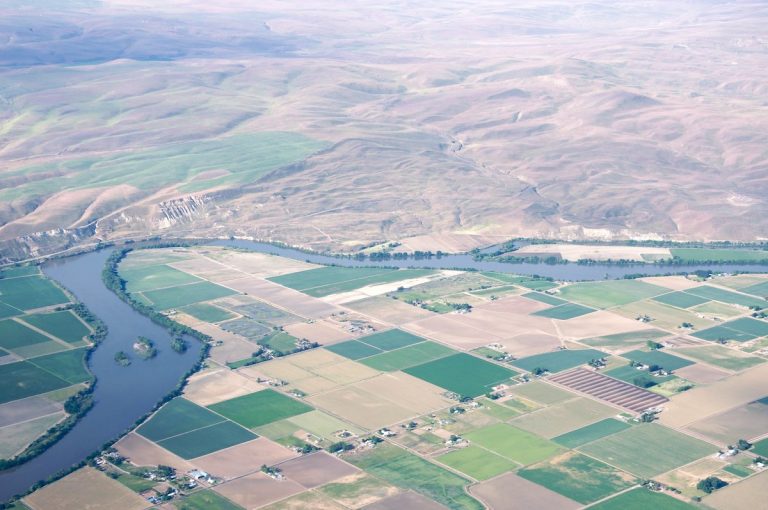Voters in five counties in eastern Oregon have backed a proposal to join the state of Idaho. The Grant, Sherman, Lake, Malheur, and Baker counties have proposed to join with the Union and Jefferson counties in a secession movement known as Greater Idaho.
Both Jefferson and Union voted to join the state of Idaho last year. The proposed Greater Idaho area would not only encompass rural eastern and southern Oregon, but also large portions of northeastern California.
Lake voted 1341 to 463 for “relocation of the Idaho border” to be taken up in county board of commissioners meetings, according to Oregon Live. Grant voted 1471 to 895 for county officials to “meet and discuss relocating Idaho border,” while Sherman voted 429 to 260 for “promoting moving Oregon-Idaho border.”
Malheur voted 3050 to 2572 for “county court meetings regarding relocation of Oregon-Idaho border,” and Baker voted for county commissioners “to meet three times per year to discuss a proposal to include 18 counties, including Baker, as part of Idaho.”
The average turnout in the five counties was 43 percent. Almost 62 percent of voters supported moving the border, according to data from Greater Idaho, a website run by the Citizens for Greater Idaho and Move Oregon’s Border organizations. “We promote the idea of creating a greater (bigger & stronger) Idaho so that conservative counties can become a part of a red state,” the site says.
Success
You are now signed up for our newsletter
Success
Check your email to complete sign up
In addition, ballot measures have been proposed to put pressure on the state legislatures of Idaho and Oregon to relocate the border. Sherman county endorsed a ballot initiative to hold county commissioners responsible for promoting “the interests of the County in the relocation of Idaho state borders.”
Another ballot initiative was supported by four other counties, mandating that county commissioners meet regularly to “discuss how to promote the interests of [the county] in any negotiations regarding relocations of Idaho state borders.”
“This election proves that rural Oregon wants out of Oregon. If Oregon really believes in liberal values such as self-determination, the Legislature won’t hold our counties captive against our will… If we’re allowed to vote for which government officials we want, we should be allowed to vote for which government we want as well,” Mike McCarter, president of Citizens for Greater Idaho, said in a statement.
Mounting support for the proposal
According to the proposal, Oregon counties switching over to Idaho can expect the following benefits:
- Stronger protection of “American values and American freedoms.”
- Lower taxes: Idahoans paid $1722 less in taxes annually than the average Oregonian. The cost of living in Oregon is also 39 percent higher than that of Idaho.
- Better political representation: Rural districts from eastern and southern Oregon believe that their “concerns and needs would be heard” in Idaho.
If the proposal is approved, 76 percent of Oregon’s land area and 21 percent of the state’s population would fall under the governance of Idaho. As a result, Idaho’s population would increase by about 49 percent. With the possible addition of some northeastern California counties, Idaho would become the third-largest state in the country.
In a USA Today news release last year, McCarter stated that rural counties had become “increasingly outraged” at the laws coming in from the state legislature that threatened “our livelihoods, our industries, our wallet, our gun rights, and our values.” He continued, “We tried voting those legislators out, but rural Oregon is outnumbered and our voices are now ignored. This is our last resort.”
In an interview with Fox News in February 2020, Idaho’s Republican Governor Brad Little said that he was not surprised conservatives in Oregon wished to merge with his state to avoid liberal policies.
“They’re looking at Idaho fondly because of our regulatory atmosphere, our values. That doesn’t surprise me one bit… What they’re interested [in] is they would like to have a little more autonomy, a little more control, a little more freedom and I can understand that,” he said in the interview. Little also stated that there would be “legal hurdles” and “governmental hurdles” to clear.
For the proposal to become reality, a formal vote would need to be conducted in the Oregon legislature, which is controlled by the Democrats. If passed, Idaho and Oregon would then have to draft an agreement to be ratified by the U.S Congress. The last time interstate borders were modified was back in August 1950, when Kansas and Missouri exchanged small parcels of land along the Missouri River.
















